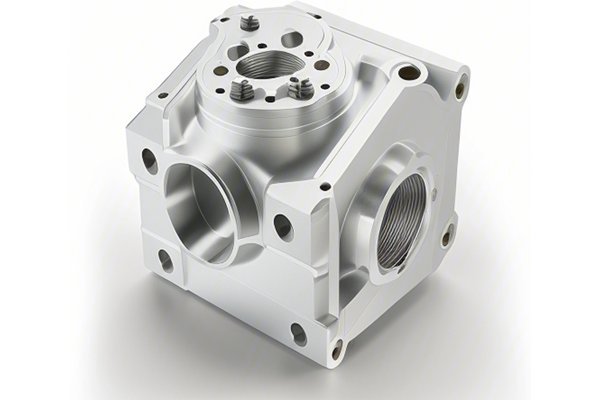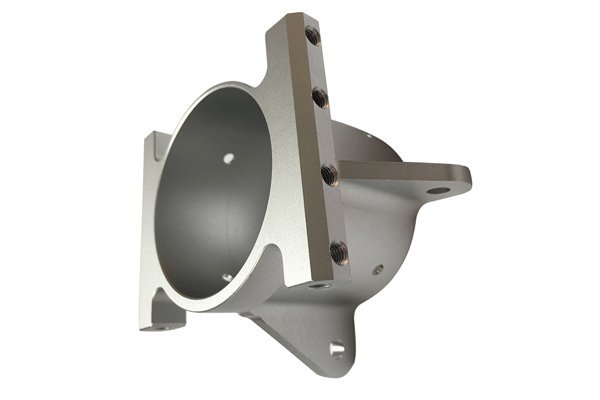Did you know that up to 80% of manufacturers in the United States have reported improved efficiency and production capabilities since integrating CNC (Computer Numerical Control) machining into their processes? In an era where precision, speed, and quality dictate market success, the adoption of CNC technology is reshaping the manufacturing landscape. With the ability to automate production and maintain high standards, CNC machining not only streamlines operations but also enhances product quality. But how exactly does it achieve these remarkable improvements? In this blog, we’ll delve deep into how CNC machining technology enhances production efficiency and product quality, and provide actionable insights and solutions for manufacturers looking to harness its benefits.
—
Understanding CNC Machining Technology
CNC machining refers to the automated process of controlling machines with the help of computers. Operators create a precise code, often referred to as G-code, that dictates the machining operations carried out by CNC machines. This technology covers various manufacturing processes, including milling, turning, drilling, and grinding, allowing for geometric complexity that traditional methods cannot achieve.
With CNC machining, companies can produce components with significantly reduced lead times, lower labor costs, and enhanced accuracy. This technology is not just a tool; it’s a game-changer for modern manufacturing.
—
Section 1: The Impact of CNC Machining on Production Efficiency
1.1 Automation and Productivity
One of the primary ways CNC machining improves production efficiency is through automation. CNC machines can operate continuously with minimal human supervision, which leads to increased output and allows human operators to focus on less menial tasks. For instance, by using CNC routers, manufacturers can generate multiple identical units simultaneously, which drastically reduces production time.
1.2 Precision and Reduced Waste
In machining, precision often translates to efficiency. CNC machines can achieve tolerances of +/
1.3 Faster Prototyping and Shorter Lead Times
CNC technology allows for rapid prototyping, enabling manufacturers to iterate designs quickly. When adjustments are needed, CNC operators can modify the G-code to test new designs without needing to draft entirely new plans. This flexibility reduces time-heavy steps in product development, ensuring a faster go-to-market time for new products.
—
Section 2: Enhancing Product Quality through CNC Machining
2.1 Consistency and Repeatability
Consistency is crucial in maintaining product quality, and CNC machining provides that reliability. Once a program is set, the same piece can be machined repetitively with breathtaking accuracy. This means that whether a manufacturer produces one unit or thousands, they can expect identical results each time. This repeatability not only satisfies customer expectations but also adheres to stringent industry standards.
2.2 Advanced Materials Compatibility
CNC machines can handle a wide range of materials, including metals like aluminum, titanium, and stainless steel, as well as plastics and composites. This capability allows manufacturers to select the best material for their products based on desired characteristics such as durability, tensile strength, and weight. Moreover, any imperfections during the material selection process can be easily compensated for during the CNC machining process.
2.3 Finishing and Surface Treatment

Once machining is completed, CNC processes can also include finishing touches like polishing and surface treatments, which enhance product quality. The capability to provide secondary operations means that the final product can be delivered with superior surface quality and finish. This attention to surface detail not only improves aesthetics but also ensures better functionality.
—
Section 3: Solutions to Optimize CNC Machining for Efficiency and Quality
3.1 Choose the Right CNC Machine
The efficiency of your CNC machining process begins with selecting the right machine for your specific application. Whether it’s a CNC lathe or a milling machine, understanding the capabilities of the equipment can significantly impact production outcomes. Manufacturers must assess the requirements of the pieces they need to produce and invest in machinery that meets those needs.
3.2 Implement Robotic Automation
Integrating robotic systems into CNC machining can further enhance productivity. Robotic arms can assist in the loading and unloading of parts, allowing CNC machines to operate seamlessly without downtime. This means multiple machines can be operated simultaneously, potentially increasing throughput without the need for additional labor.
3.3 Continuous Training for Operators
Even the best machines require skilled operators to optimize performance. Regular training programs for CNC machinists ensure they are familiar with the latest technologies, software updates, and operational best practices. Empowered employees contribute to greater efficiency and maintain high-quality production standards.
—
Section 4: Real-World Examples of CNC Machining Success
4.1 Case Study: Aerospace Industry
The aerospace industry has long been an advocate for CNC machining due to its precise requirements. Companies like Boeing have adopted CNC technology not only for manufacturing aircraft components but also for rapid prototyping of new designs. By utilizing CNC machining, they’ve significantly decreased lead times, lowered costs, and enhanced overall product quality—resulting in safer, more efficient aircraft.
4.2 Case Study: Automotive Sector
In the automotive sector, manufacturers employ CNC machining to produce high-quality parts that endure tough conditions. Firms like Ford and Tesla utilize CNC technologies for everything from engine components to custom vehicle fittings. The results? Enhanced performance, minimal lead time, and improved vehicle reliability—all thanks to CNC machining.
—
CNC machining is transforming the manufacturing landscape, driving production efficiency and product quality to new heights. By embracing automation, precision, and the ability to iterate rapidly, manufacturers not only significantly increase their output rates but also boost the overall quality of their products. The road towards modern manufacturing excellence involves harnessing CNC technology, training skilled employees, and continually refining processes.
This blog serves as a guide for manufacturers who aspire to leverage CNC machining for their production needs. As we’ve covered, considering factors such as choosing the right equipment, incorporating robotics, and facilitating ongoing training can result in meaningful improvements in efficiency and quality.
In a world where market demands are constantly evolving, those who capitalize on the efficiencies that CNC machining provides will stand at the forefront of their industries. As you ponder the insights shared here, recognize that the implications of CNC technology extend beyond simple machining; they shape the future of manufacturing itself. Invest wisely and execute diligently, and your organization will undoubtedly flourish in this competitive landscape.






